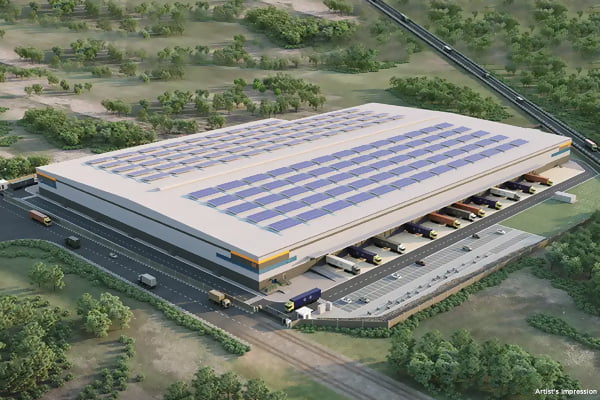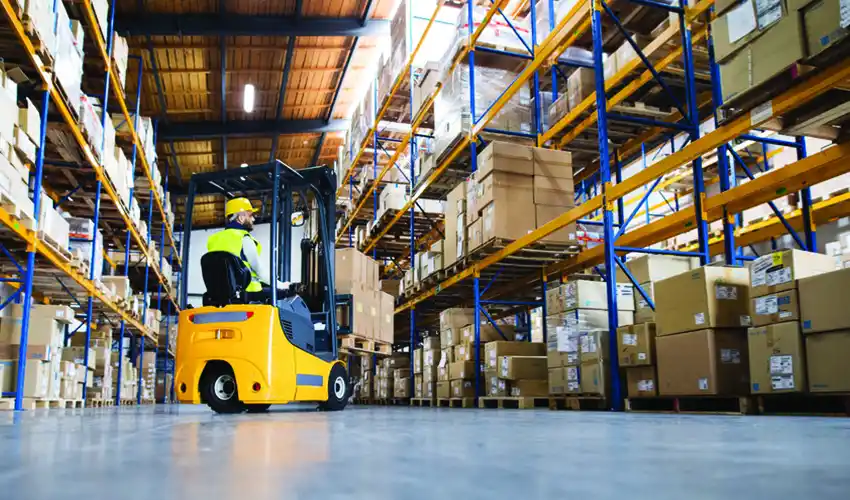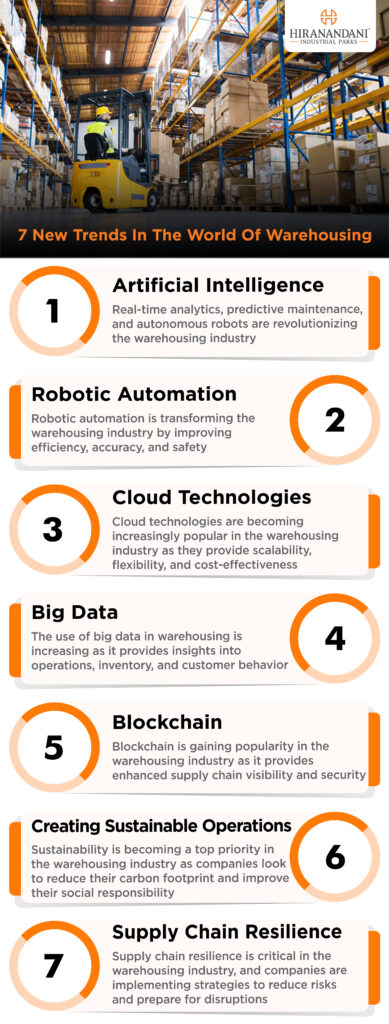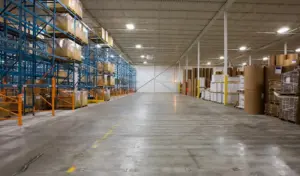Staying updated with the latest trends in warehousing can give businesses a competitive edge and help them stay ahead of the game. In this blog post, we will explore 7 of the most important and transformative trends in the world of storage & warehousing services that are helping businesses to increase efficiency, reduce costs, and stay ahead of the curve.
- Artificial Intelligence (AI)
AI is revolutionising the way that businesses manage their supply chain operations. With machine learning and predictive analytics, businesses can optimise their inventory management, reduce errors, and even predict future demand. By automating repetitive tasks, AI can free up staff to focus on high-value activities and help businesses to achieve greater efficiency and profitability.
- Robotic Automation
Robotic automation is transforming the world of Warehousing Storage Solutions by automating manual tasks and reducing labour costs. Incorporating robots for tasks such as palletizing and order picking not only minimizes the risk of staff injuries but also enables businesses to enhance speed and precision, leading to improved productivity and cost-effectiveness. By leveraging robotic automation, businesses can create a more efficient and safer work environment while reducing costs.
- Cloud Technologies
Cloud technologies are helping businesses to streamline their supply chain operations by providing real-time visibility and data analytics. By leveraging cloud-based software, businesses can optimise their inventory management, reduce shipping costs, and improve collaboration across their supply chain partners. With the ability to access data from anywhere in the world, cloud technologies are enabling businesses to achieve greater agility and responsiveness.
- Big Data
Big data is helping businesses to gain greater insight into their supply chain operations and make data-driven decisions. With the ability to analyse vast amounts of data from multiple sources, businesses can identify trends, predict future demand, and optimise their operations for greater efficiency and profitability. By leveraging big data, businesses can create a more responsive and agile supply chain that can adapt to changing market conditions.
- Blockchain
Blockchain is revolutionising the way businesses manage their supply chain operations by providing greater transparency and security. With the ability to track products from the point of origin to the end consumer, blockchain is helping businesses to reduce the risk of counterfeit products and ensure greater product safety. By leveraging blockchain, businesses can create a more secure and trustworthy supply chain that can increase customer confidence and faster and safe delivery.
- Creating Sustainable Operations
As customers become more environmentally conscious, creating sustainable operations has become increasingly important for warehousing and fulfillment services. By implementing sustainable practices such as reducing packaging waste, using renewable energy sources, and optimising transportation routes, businesses can create a more eco-friendly supply chain that reduces costs and helps to protect the planet.
- Supply Chain Resilience
Supply chain resilience is becoming increasingly important in a world where global disruptions can have a significant impact on business operations. By building a more resilient supply chain that can adapt to disruptions such as natural disasters or pandemics, businesses can reduce the risk of impact due to disruptions and maintain business continuity.
In conclusion, the world of warehousing is rapidly evolving, and businesses that want to stay ahead of the curve need to embrace the latest trends and technologies. By leveraging AI, robotic automation, cloud technologies, big data, blockchain, creating sustainable operations, and supply chain resilience, businesses can create a more efficient, secure, and sustainable supply chain that can adapt to changing market conditions and increase profitability.
FAQ
- What are the new trends in warehousing?
Some of the new trends in warehousing include the use of Artificial Intelligence, Robotic Automation, Cloud Technologies, Big Data, and Blockchain. Additionally, there is a growing emphasis on creating sustainable operations and building supply chain resilience to adapt to global disruptions. According to a report by Deloitte, 36% of surveyed logistics and supply chain professionals believe that AI and automation will have a significant impact on warehousing and distribution over the next five years.
- What are the 4 main functions of a warehouse?
The four main functions of a warehouse are storage, handling, processing, and shipping. The primary function of a warehouse is to provide storage space for goods. The handling function of a warehouse involves moving and positioning goods within the warehouse. The processing function of a warehouse involves activities like labelling, packaging, and assembly. The shipping function of a warehouse involves preparing and dispatching goods to customers.
- What are the 3 roles of warehouses?
The three main roles of warehouses are storage, consolidation, and customization. The storage role involves the storage of goods for a period of time before they are shipped to customers. The consolidation role involves combining smaller shipments into larger ones to reduce transportation costs. The customization role involves modifying products to meet specific customer requirements. Warehouses play an important role in the supply chain by facilitating the efficient storage, handling, and distribution of goods.

















